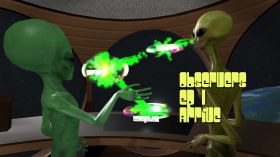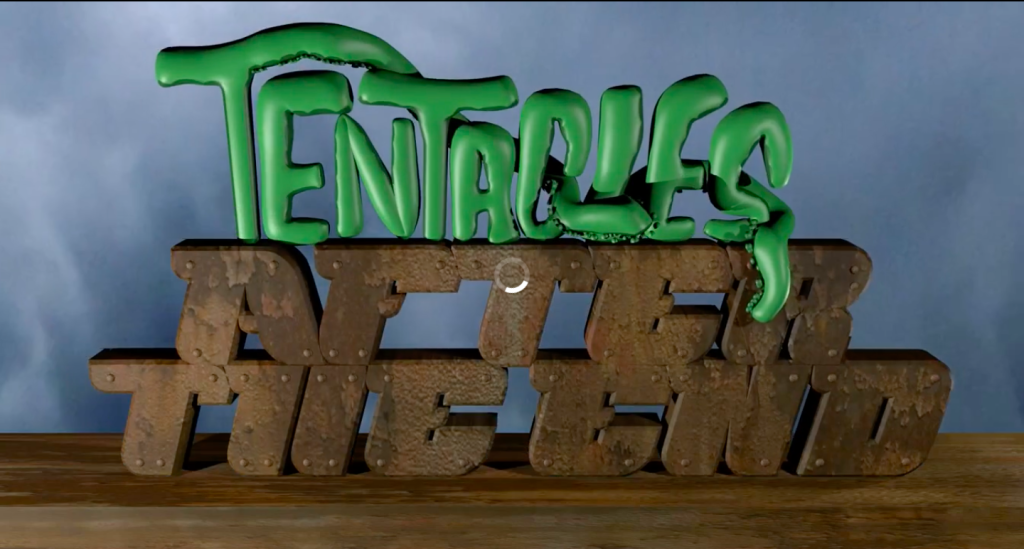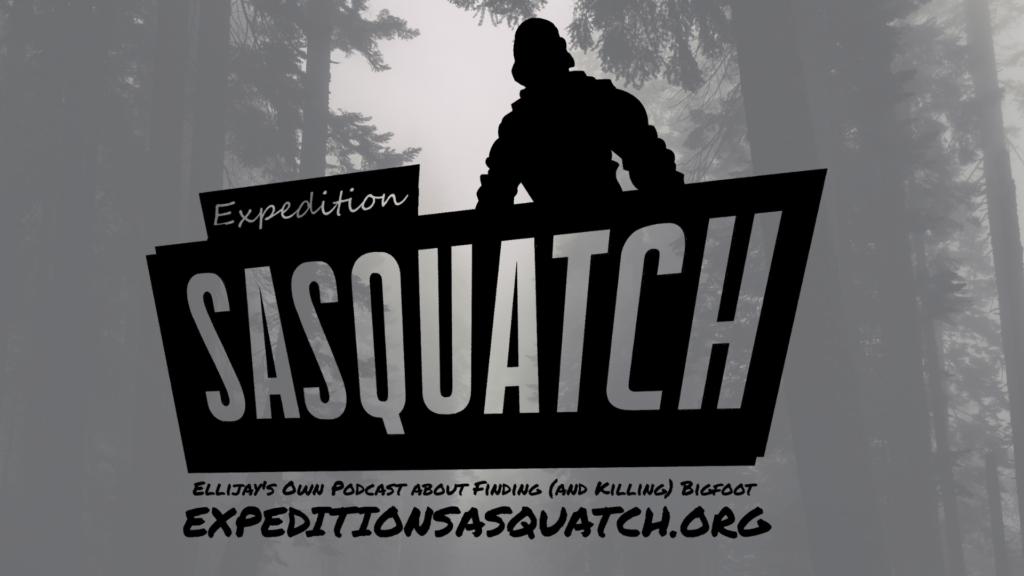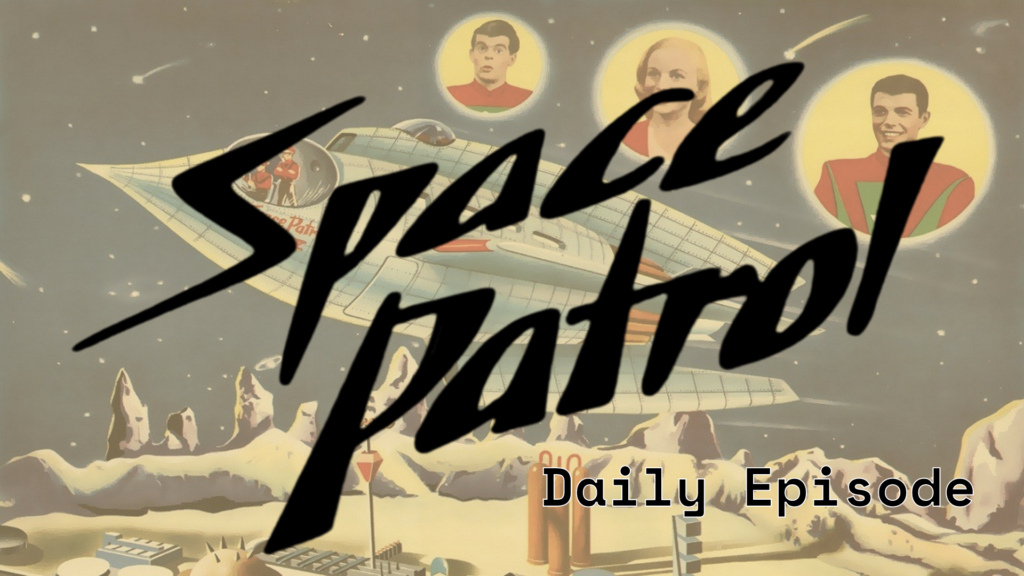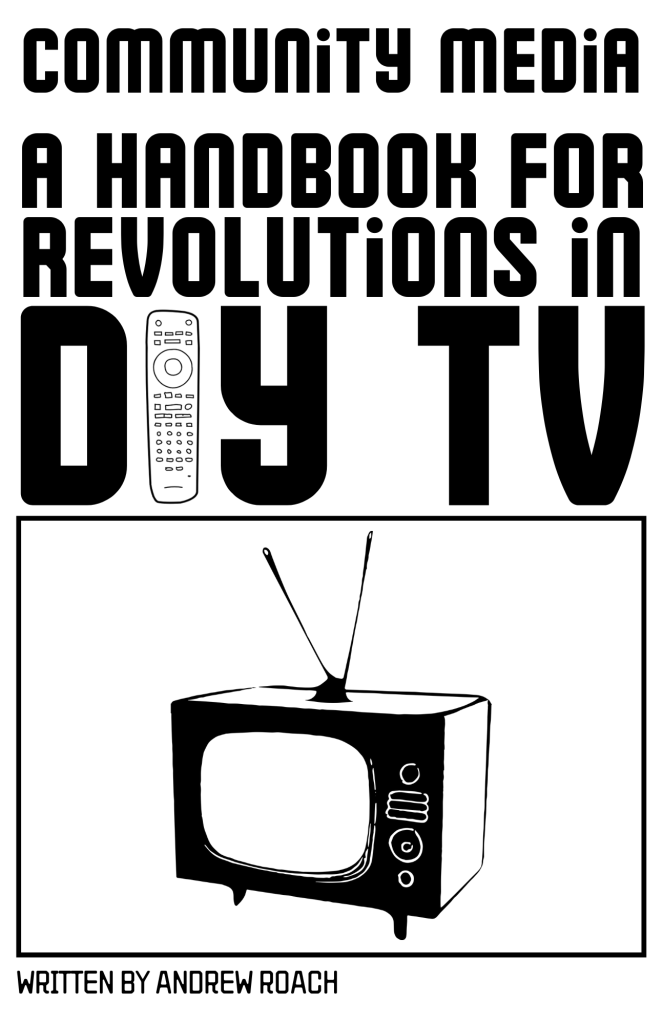
Ethan: All right are we good? We rolling?
Nelson (distantly): Yep! All right, let’s uh… do the old clapperoony.
Ethan: All right, three, two, one. [Clap.] Okay! That was- we discussed The Procedure. We have The Procedure down now.
Andrew: We planned it.
Ethan: We planned it! You have to plan it.
[“It’s morphin time!” + intro music]
Ethan: Okay, minnaasan, yokoso. Welcome to your favorite cross-cultural deep dive analysis and recap podcast covering Super Sentai and Power Rangers, Kenkyuu Sentai Podcast Rangers. My name is Ethan, I use he/him pronouns, and with me is my usual co-host Andrew.
Andrew: Hey Ethan!
Ethan: How’s it going?
Andrew: It’s- it’s going.
Ethan: We’re having a day.
Andrew: It’s been a day. My name is Andrew, I also use he/him pronouns, and I’m here to talk about some Power Rangers.
Ethan: Some Powerful Rangers. Today we’re discussing Kyoryu Sentai Zyuranger episode five “Kowai Nazo Nazo (Scary Riddles)” and Mighty Morphin’ Power Rangers season one, episode five, “Different Drum.” Without further ado, unless we have further ado, let’s get into the recap. You got any further ado?
Andrew: Naw. This- the-
Ethan: It’s a weird batch, guys.
Andrew: Continuing the trend, these Sentai episodes are much better than these Power Rangers episodes.
[“Kyoryu Sentai… Zyuranger!!”]
Ethan: Okay, so, Super Sentai recap. “Kowai Nazo Nazo” was written by Sugimura Noboru and directed by Sakamoto Taro. We begin with the most ominously threatening gameshow host to ever harass random children in the park. This is Dora Sphinx, who uses riddles to trap people and blow them away with his wings. While Dora Sphinx is being the most normal anyone has ever been, Dan and Boi are out on the town, enjoying some modern life. Dan has got a 170 million year thirst to quench. In the underground sanctuary, Geki is dreaming about wandering alone through a scorching desert. Mei wakes him, but something is wrong. Bandora, having a dance party in her palace, invokes the name of Satan and gives a speech about how much she hates children. Dora Sphinx captures Boi while Dan is making a phone call, which leads Dan to impetuously allow himself to be captured so that the other Rangers can figure out where Dora Sphinx is sending everyone. The other Rangers spot him flying through the air and follow him to a forest where Dora Sphinx has turned all his victims into trees, which he reveals will soon be cut down to build a golf course. Teleporting the remaining Rangers to an amphitheater, Dora Sphinx proceeds to capture Mei and then Goushi, leaving Geki all on his own. He does manage to solve the riddles, except the last one, which isn’t really even a riddle. Teleporting again to a quarry, Bandora makes Dora Sphinx a giant, so Geki summons his Guardian Beast, but instead of fighting with him to defeat Dora Sphinx, the Tyrannosaurus teleports Geki again to the scorching desert that he foresaw in his vision. To be continued! It’s a two-parter.
Andrew: Aren’t they all?
Ethan: No, no.
Andrew: Just all the ones that have happened so far.
Ethan: Right, because we’re setting- we’re still sort of doing some stagesetting, so this one leads into the next episode, “Tate, Daizyujin!” where they form the Megazord for the first time, and then seven and eight are sort of standalone, monster of the week style. So I think there’s-
Andrew: I haven’t watched those. I’m supposed to have watched those but… I’ll watch them tonight.
Ethan: It’s fine. You’ll watch them tonight. A couple of really interesting points about this episode: this is the first time we hear Great Satan’s name mentioned. That’s important. Pay attention to that, put a pin in that. Comes up again,
Andrew: So I’m a little confused, because I thought the Great Satan was the United States of America.
Ethan: That is- this is a fascinating fanfiction universe you’ve just spawned, where just- where Rita’s just like, a troop.
Andrew: Yeah!
Ethan: …No, it’s a- it’s like, in Zyuranger, Great Satan is this sort of very ancient evil spirit.
Andrew: Okay.
Ethan: We’ll get more information later.
Andrew: So when you talk about the Great Satan of the United States of America, you’re you’re talking about something completely different.
Ethan: Two different Satans. The action in this is so goofy, just the way that the Sphinx like flexes his whole core and arms to flap his wings and everybody just zoots through the air, I mean it’s just all over the place.
Andrew: This footage was used in the episode of Power Rangers we talked about in the last episode, if I’m not mistaken, and it made absolutely no sense there, and I’m grateful that it makes slightly more sense here, but there is so much teleporting in this one. They’re just like-
Ethan: Yeah, they’re just like all over the place.
Andrew: It was almost as bad as Power Rangers with the- just like, “Okay, well, we’ve got some footage out here in the in the quarry, so… guess everybody’s going to the quarry!”
Ethan: And now we’re here. The Sphinx’s riddles are all really like s—y puns in Japanese. Some of them I was able to follow, and some of them I was not, but that’s sort of his whole deal, is that he he grills you on more more and more increasingly obscure wordplay until he can trap you in a tree and then you get cut down to make a golf course. It’s… it’s a scheme.
Andrew: What a convoluted way to kill people.
Ethan: Yeah and you know, Bandora’s whole sort of idea is that like all the children will disappear, and then all the trees will get cut down when the golf course gets built, and humanity as a whole will be so full of despair from this disappearance and then killing of the children, that they’ll just give up on everything, and I don’t know. She’s kind of all over the place.
Andrew: The idea, right, that that all the children of the world and/or Japan are going to disappear, and they’re still gonna build the golf course… Don’t you think construction would stop?
Ethan: It’s- yeah, this is a plan with many holes in it. We will learn through the course of this show that Bandora’s working through some stuff.
Andrew: Sure.
Ethan: I’m not- I don’t want to spoil anything because it’s kind of like the sort of core-
Andrew: I mean she has been imprisoned for a really long time.
Ethan: There’s a reason for that. We’ll get into that, you know, as more of her and Barza’s backstory are revealed, but I think that’s all I have to really say it’s a lot of setup for next episode. Geki’s getting these visions of this sort of desert otherworld, where he’s a sort of like wandering through. He looks like, he looks really sick, when Mei wakes him up. He’s like sweaty and red and he’s like- you know, he looks like how you feel when you wake up from a really good nap at totally the wrong time of day.
Andrew: Yeah, this one was was super disorienting. And like, intentionally so, but I’m glad I watched this one and the next one back to back.
Ethan: Yeah, definitely a two-parter and also the Sphinx’s his laugh and his human form is just so funny and I think that’s all I have to say about that.
Andrew: Cool.
Ethan: Hit us with a-
Andrew: Power Rangers!
Ethan: -Power Rangers recap?
Andrew: I can do that.
[“Go! Go! Power Rangers!”]
Andrew: So this episode is called “Different Drum” and spoilers: it was not good.
Ethan: Not very good. There was an attempt made to like make an inclusive and interesting episode of television, and they did not do that.
Andrew: Yeah, I mean- well, I’ll just get into it. So this episode opens with Billy failing to dance and being made fun of. They specifically ridicule his ability to get girls. As we’ve mentioned previously, this is a thing that they’re real, real rough on Billy. They’re almost as bad to Billy as they are to Bulk and Skull, and it’s a real shame.
Ethan: It takes on a different dimension when you know that David Yost is gay, also.
Andrew: Yeah, yeah, and that they have written into the show that Billy can’t get girls, I mean. Kimmy’s teaching a dance class. A member of Kimmy’s dance class is deaf. According to the Power Rangers Wiki, her name is Melissa, but I don’t remember them calling her by that name at this point in the episode. Kimmy signs instructions to her, I’m sure that this is some kind of foreshadowing. Rita decides to use music monsters to fight the Power Rangers. She also insults Finster. Bulk and Skull show up to the gym/cafeteria where the Power Rangers always are, for some reason, and are challenged to dance. The gathered teenagers ridicule Bulk with some incredibly fatphobic bulls** t ending with Bulk tearing his jeans again.
Ethan: Second episode in a row. In my notes, I do have one note which is that Billy’s fit in this episode is like a truly excellent like, non-binary transmasc look, and also Bulk and Skull’s- all of Bulk and Skull’s outfits would be like peak lesbian fashion in about 12 years.
Andrew: Yeah, yeah. I particularly disliked the way that the backing music changed between Zack and Bulk dancing. I don’t know if you noticed that, but but Zack’s got like music with a beat and then when they switch over to Bulk-
Ethan: It’s just like clown noises.
Andrew: It’s, yeah, it’s very much like Benny Hill kind of thing.
Ethan: Yaketty Sax.
Andrew: Like, hey, let’s let’s make fun of the fat guy. Of course this all ends with Bulk face planting into Zack’s food, as is common with these encounters. At this point, the Power Rangers leave to watch a movie.
Ethan: Okay.
Andrew: Yeah. Instead of any kind of modern music, Finster, who has been instructed by Rita to build a music monster, built an accordion monster to hypnotize children.
Ethan: Yep, the Gnarly Gnome.
Andrew: Melissa, as was established earlier, is not impacted by this monster.
Ethan: Right.
Andrew: There is actually very little accordion music played. There is a little bit, but it’s mostly just this weird drone. They just play this like , [BERRRRRRRRR…..]
Ethan: Yeah, so when this monster shows up in Zyuranger, I mean it sounds like–I need to go back and listen again–but it sounds like he’s playing “Working on the Railroad” and “Someone’s in the Kitchen with Dina” and I was like- I had to pause the video and say, “Wait a second, is that-? What was that?” But you’re right, it’s just sort of this sort of tuneless, arhythmic, amelodic sort of noise.
Andrew: Drone.
Ethan: Hypnotizes all the…
Andrew: The monster Pied Pipers the kids into a cave. Melissa, for unknown reasons, follows along, but can’t enter the cave because of some kind of net. This is not explained. Apparently, deaf people can’t enter caves. So she goes back to the gym/juice bar to tell the Power Rangers. Why? Who knows! There’s a moment when she gets back to the juice bar that’s really s-y. While no one is around who can sign, and before she starts writing that she needs help, they do this almost like Lassie thing with her and-
Ethan: Literally Jason’s like, “What is it? What’s wrong?”
Andrew: And yeah, I mean, instantly made me deeply uncomfortable. Thankfully it does not last for long, and and they do recover and and do something reasonable but like, it was real, real s-y. The footage from the cave, I thought, was pretty interesting, in that it is a combination of the Japanese mask footage and fresh American footage. They’ve got the American kids kind of superimposed alongside the mask footage. I thought it worked pretty well. They’ve done that a couple of times in the past and it has worked really, really poorly. This is the the first time that I’ve seen it work well. At this point, the the Gnome turns invisible for some reason. Not explained at all. The Rangers then morph with no clear reason and appear holding their weapons before immediately engaging the monster in battle.
Ethan: I wrote “beating his a** right out the gate.”
Andrew: Keep in mind, this is a monster that they’ve never seen before, and have no contact with. They know nothing about this guy, they just morph, weapons, fight. They very quickly decide to build the ridiculous gun and power blast the monster. I don’t know what the ridiculous gun is supposed to be called, I don’t remember from the previous episode. I will be referring to it only as the ridiculous gun.
Ethan: I think they name it the Power Blaster, which is way less cool than its Sentai-
Andrew: That explains why I said “and power blast the monster.”
Ethan: Yeah, in Super Sentai, it’s called the Howling Cannon, which just kicks a**, sounds really good.
Andrew: Yeah, so Rita throws her staff and makes the monster grow, the Zangers summon their Zords, they pull the crystals and go tank mode. Kimmy’s footage in this montage is is weirdly desaturated, as if they had used a shot of a different ranger.
Ethan: I made a note of that too! Yeah, no, it’s just- some of the colors are like very muted, she just looks gray. Most of the other Rangers look fine, but like something happened with that film transfer, I think.
Andrew: So they they go tank mode. The tank battle is ineffective, so they go Megazord mode. The monster starts playing music, which makes the Rangers hallucinate a city, or possibly teleports to them, it’s not really clear. They then pull the sword, as introduced in the last episode, and they end the fight. With the monster dead, the teenagers free the prisoners who don’t question anything about their situation, in spite of the fact that they obviously should. At this point, we hear Melissa’s name for the first time.
Ethan: Five-sixths of the way through the episode.
Andrew: Yeah, I mean, seconds before it’s over. They were like, “Oh, yeah, we should give her a name.” We end up back at the gym and juice bar. Billy dances with Melissa. Apparently, he can break dance now. That’s the episode.
Ethan: I mean, he really busts it out. It’s kind of incredible.
Andrew: I have to assume that that both David Yost and Walter Jones have a background in dance. I think we looked up in the last episode that Walter Jones definitely does.
Ethan: Walter definitely does. Also lost a piece of a finger as a child, which I thought was wild.
Andrew:But like two episodes in a row that weirdly center on dance, and that specifically center on Billy’s inability to dance, which I thought was just a really weird choice, and probably explains some of the weird hang-ups I had as a kid about dancing.
Ethan: That makes sense.
Andrew: I had serious insecurities about the concept of dance.
Ethan: I still do.
Andrew: And I blame Power Rangers for that entirely.
Ethan: That’s not unreasonable. I have many questions about this episode, but one of them is: why is a giant gnome not just a regular sized guy? Gnomes are tiny, supposedly, so you make a giant gnome, it’s just like a guy. That’s my main question. No, I mean this one is really interesting because it is another pretty poor adaptation of the source episode from Zyuranger, which we’re kind of ahead of the curve now, as far as monsters go, and I don’t think we’ll match up again until episode 17, but the Gnarly Gnome is based on Dora Goblin, and Dora Goblin pulls on a lot of like Celtic fairy mythos, in that he is able to like- they they called it ‘mazing.’ Basically you’re wandering through the woods at night, you’re trying to get home, and you keep getting turned around: you’ve been fairy-mazed. So he can’t be seen by adults, which is where the invisibility stuff comes from, and the only way to make him visible is to get him to swap his shoes. And so there’s a whole bit in episode seven about them getting him to swap his shoes. That’s episode seven, which is “Mieru, Mieru!”, which we’ll talk about two episodes from now. But- so a lot of the monsters so far have been like quasi-Greek-mythology-based this one is just totally random, it’s a fairy.
Andrew: And they did not use any of that mythology in the Power Rangers episode.
Ethan: No, absolutely none. It just sort of shows up and starts doing the Pied Piper thing.
Andrew: And then as soon as they see him, they’re like, “Okay, time to beat the gnome’s a**.”
Ethan: There’s a whole bit… I mean, sort of the whole conflict in the Zyuranger episode is that the Rangers are adults and can’t see the monster. So they are like losing the fight and it’s- they have to figure out a strategy, you know, sort of around that. This is not a good adaptation of of that source material. It’s kind of all over the place. And like I said at the start of the episode, they made an attempt to like be inclusive and have a disabled character like feature prominently, but… I mean she does sort of save the day, but she’s also treated quite badly. She’s not named until the end of the episode, but the the girl who bumps into her and gets s—-y about it is named, like first thing. So I mean they really- they they were aiming in the right direction, but I think they really missed the mark with this. But it’s nice to see that they’re trying, given the other sort of background that we know about, you know, with Saban’s politics and with the weird color coding of the morph suits. You know, they made an attempt, and that’s something, but I think that’s all I really have to say about “Different Drum.”
Andrew: I don’t have much to say about it either. It was not a very good episode.
Ethan: No, not a very good episode.
Andrew: I did not feel good about watching it, I did not feel good about myself after having watched it. Normally, these are at least fun, but the battles in this one were also just garbage. This episode, I think, represents the worst of Power Rangers so far. It is just…
Ethan: It’s frantic, almost. Doesn’t follow anything…
Andrew: It’s nonsensical, it doesn’t really- there is a plot there, and I’ll give it that. Compared to to some of the earlier episodes that they do, they are following a plot, but it feels so rushed and shoehorned and just vaguely coherent. And I know that Power Rangers gets better than this, I’ve alluded to that a couple of times, but like I’ve gotten far enough in on Power Rangers that I know that Power Rangers gets better than this.
Ethan: That’s how you know it was a kid’s show, because we ate it up when we were small, but looking at it with any degree of criticality is just like, “Whew….”
Andrew: But also I probably never saw this episode as a kid, you know? This is not one that would have been picked up in syndication reruns, you know? It was filler.
Ethan: If I had to sit down and make a list of episodes that I did see, I would not be able to.
Andrew: No, I probably couldn’t either, but there are some moments that I really distinctly remember, you know? I remember the Green Ranger saga, I probably had that on VHS at some point, you know. But like that there are moments that I remember and this is nowhere near them. If I saw this episode as a kid, it definitely didn’t make an impression, but I think chances are good that neither one of us would have, because this would have aired probably just when it aired.
Ethan: Yeah, that makes sense.
Andrew: There’s no good reason for this to be part of the the recap. Doesn’t move the plot forward, it doesn’t move the story forward, and it’s not very good.
Ethan:Mhm, yeah. Sort of sticking with the monster of the minute-
Andrew: Yeah, even more so in this case, because they see the monster, they beat the monster. Like, there’s no buildup, there’s no tension, just as a storytelling device, this episode falls flat on its a**.
Ethan: There was one more funny thing, which is that the weird net that falls down over the cave is like very obviously like a… construction netting, but it makes a sound like a castle portcullis. Like it’s probably magic or whatever, but I just think that was funny that… I mean, those things, they come in varying degrees of flimsiness. Some of them you could just like rip apart with your hands, and some that are a bit more tough, but none of them like are made of metal and could keep any human person out with any degree of effectiveness. Just an odd- kind of a running theme of like odd sound effects.
Andrew: Foley work’s hard.
Ethan (misunderstanding slightly): Yeah, foley does work hard. They just make strange choices.
Andrew: Well, so, to do foley work effectively is very difficult, but I think that it is very likely that instead of doing foley work, effectively, what they’ve done for this episode is just used a sound effects library.
Ethan: Yeah, almost certainly, yeah.
Andrew: And a lot of the sounds that they’re using here you can identify back to a couple of the widely available sound effects libraries.
Ethan: And it goes back to the the car squeak noise from from “Hi Five.”
Andrew: Yeah, it’s a cost cutting measure. You can use a sound effects library instead of having a foley artist, as long as you don’t care if your sound effects are very good.
Ethan: Yeah, which for a show for children in the 90s, didn’t really matter.
Andrew: And like I do it all the time. I’ve been scoring cartoons for New Ellijay Television, the two Mickey Mouse cartoons that recently entered the public domain. One of them did not have a soundtrack, so I scored it, put some music behind it, added some sound effects, and like I picked one of the commonly available sound effects libraries, and picked some sound effects out of it, and it’s fine. It works.
Ethan: You get a Wilhelm scream in there?
Andrew: I did not get a Wilhelm scream in there. There is not an instant- I mean, there’s one instance right after Mickey gets slapped that it could have worked, but anyway-
Ethan: I love a Wilhelm scream. It’s just- it’s very good.
Andrew: Nelson, you want to insert one right here?
Nelson: Yup. [AAAUUUUGH] Also, there’s a thing, when they’re fighting the Putties, I don’t know if you guys noticed, but when they’re fighting the Putties like there’s just like a pipe noise?
Ethan: Yeah! Yeah, it’s just like like a pipe hitting a concrete wall or something. It makes me wonder, like- they’re called Putty, they’re made of clay, but like what does hitting them feel like? Because like I’ve handled like the bags of clay we have in the pottery studio next door to here. I don’t know if you could just like…
Andrew: The putties have been fired.
Ethan: They have been fired. So are they like-?
Andrew: Bisque! They’re stoneware.
Ethan: That’s very weird to think about.
Andrew: And so like it would be like punching brittle rocks.
Ethan: Sounds bad.
Andrew: Yeah, and they do it barehanded all the time.
Ethan: Uh-huh. The the pipe noise that Nelson brings up is- it’s a really good sound effect.
Andrew: For something else, yeah.
Ethan: No, no, it’s like- it fits really well. Like it doesn’t make any logical sense, but it is like- it adds to the spectacle of the of the thing. Okay, well, I think that’s good for our talkback, and we’ll move on to our research portion, which is mine today because it’s an odd-numbered episode. My research topic this time is ‘What is tokusatsu?’ and this is a part one. We’re gonna have to dive into this.
Andrew: So, Ethan, what is tokusatsu?
Ethan: We’ll get to that. It’s an enormous topic with, you know, i mean- explicitly of, you know, 40, almost 50, years of TV history, but actually going back much further than that. For my first research segment, in episode one, I chose Ishinomori Shotaro, who is credited as essentially creating the Super Sentai franchise with Himitsu Sentai Gorenger in 1975. But where does this wider genre of tokusatsu come from? Tokusatsu translated literally means “special filming.” It denotes using techniques like miniatures and scale model sets, as well as camera tricks like the low angles used to make characters look giant, and the origins go back even further than 1975. Tokusatsu has origins in traditional Japanese theater disciplines like kabuki’s choreographed stage fights and bunraku’s puppetry. Tokusatsu also has subgenres within it, as well: kaiju films like Godzilla, for example, as well as superhero shows like Kamen Rider and Super Sentai. There are two names it’s important to know when discussing the origins of the style of filmmaking and those are Makino Shozo and Tsuburaya Eiji. Makino was a very early filmmaker in Japan, with his earliest credit on IMDB listed as 1908. He directed dozens of short films and popularized the jidaigeki style of Japanese period films, depicting medieval and feudal Japan, and he used trick shots and other techniques to give these early films more expression. And another interesting tidbit is that he recruited a kabuki actor called Onoe Matsunosuke into being one of Japan’s first film stars. This is like, how do you make a film with lots of feeling with the first camera ever made? I mean, we’re talking black and white silent movies, early, early stuff.
Andrew: The same kind of thing that Melies would have been dealing with in France, trying to like, get some movement and emotion into- at the time they they didn’t really even have camera movement, they hadn’t worked out the dolly yet, you know?
Ethan: Tsuburaya Eiji came into filmmaking significantly later, but like Ishinomori, would have an outsize effect for a single creator. Among his many credits are the original Godzilla, as well as many of its sequels, Kurosawa Akira’s Throne of Blood, and, crucially, Ultraman, which Tsuburaya created. Like Super Sentai and Kamen Rider, the Ultraman franchise is one of those mega-popular media behemoths in Japan, which is still going to this day, having inspired and influenced many generations of creators there, including, for example, Anno Hideaki, the creator of Evangelion. It’s all connected whe[n] you start looking. We’ll get more into tokusatsu, and filmmaking in Japan in general, in the future. There’s a lot to dig into.
Andrew: So Ultraman was probably my second exposure to tokusatsu, after Power Rangers.
Ethan: Yeah, late sixties.
Andrew: And not from the Ultraman show or anything, but from the fact that my dad had grown up as a huge Ultraman fan. You know, makes sense time-wise. And he showed up one day at the house, I think he had gone on a work trip, but he came back one day from wherever he had been with a bunch of Ultraman toys, big vinyl Ultraman toys, and I didn’t know anything about this guy, I just knew that he was much bigger than all my other toys, and so he got to wreck stuff. So like Ultraman- I, to this day, have not seen any Ultraman. We should do a special episode at some point, but he holds a very special place in my heart.
Ethan: We would have to do a bunch of special episodes, because there is a ton of Ultraman to watch. I would be interested! We had a VHS of Godzilla vs Megalon.
Andrew: Is that the one with Jet Jaguar?
Ethan: That is the one with Jet Jaguar, who is…
Andrew: Ultraman.
Ethan: Who is basically Ultraman, yeah. This is one of those figures who- I mean, he is- that franchise is just so popular in Japan, and has been forever, and now, I mean, there’s been multiple Netflix animated shows now, and it’s just all over the place. I mean, it’s one of those really, really big ones and, like I said a minute ago, like started in the late 60s. Like I think the first Ultraman broadcasts were before color.
Andrew: Makes sense.
Ethan: So this tokusatsu franchise, or style, rather, is- it’s got a lot of depths to it, and it goes it goes back a long way, depending on, you know, sort of, how you count it.
Andrew: Yeah, I mean like, when did the first Godzilla film come out? 54?
Ethan: 54.
Andrew: Yeah, so like, at least that far.
Ethan: And Tsuburaya was like, the like, special effects director, basically, for that. Pioneered some wild things and went on to sort of create Ultraman, which it- became this massive media success.
Andrew: And paves the way for everything else.
Ethan: So lots of really interesting sort of- the roots reached to really interesting places.
Andrew: Yeah, we gotta go find some of the silent films.
Ethan: Yeah, absolutely. They’re all- I mean, I don’t know all of them, but many of them are listed on IMDB, so we have something to look for.
Andrew: Cool.
Ethan: Okay, and I guess that’s it. We’ll be back next time to discuss episode six of Zyuranger, “Tate, Dazyujin! (Arise, Daizyujin!)” and Power Rangers, “Food Fight.” If you’ve enjoyed the show, please feel free to send me five dollars, and if you want to find me online, don’t. But you can follow the show on the fediverse @KenkyuuSentaiPodcastRangers@meet.communitymedia.network. Andrew, how can people get in touch and what should they look out for?
Andrew: I’m @AJRoach42@Retro.Social, which is the best way to find me. If you want stuff to look out for: go check out New Ellijay Television. We’ve got a bunch of big stuff planned. It’s probably where you’ve gotten this podcast from, but if you got it from, you know, one of those podcast distribution networks, go click the link. It’ll be worth it, I promise.
Ethan: Yeah. That’s all show we have for you today. Thank you so much for listening. Thanks also to Hurly-Burly and the Volcanic Fallout for the use of their song “Colossal Might (Totally Radical Instrumental Version)” for our intro and outro music. Kenkyuu Sentai Podcast Rangers is licensed CC-BY-SA and produced in collaboration with New Ellijay Television at the Ellijay Makerspace, which stands on the ancestral, unceded, stolen, and occupied lands of the Cherokee people. You can learn more about the Makerspace by visiting EllijayMakerspace.org and you can learn more about the Cherokee people by visiting Cherokee.org. Strength, love, and solidarity to all oppressed people, and in the words of a wise man: “F**k capitalism; go home.”
Andrew: That’s an episode.
[Outro music]

